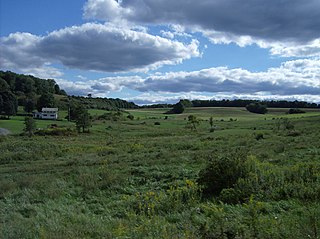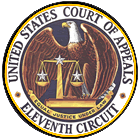
The Fourth Amendment to the United States Constitution is part of the Bill of Rights. It prohibits unreasonable searches and seizures. In addition, it sets requirements for issuing warrants: warrants must be issued by a judge or magistrate, justified by probable cause, supported by oath or affirmation, and must particularly describe the place to be searched and the persons or things to be seized.
In criminal procedure law of the United States, an exigent circumstance allows law enforcement to enter a structure without a search warrant, or if they have a "knock and announce" warrant, allows them to enter without knocking and waiting for the owner's permission to enter. It must be a situation where people are in imminent danger, evidence faces imminent destruction, or a suspect's escape is imminent. Once entry is obtained, the plain view doctrine applies, allowing the seizure of any evidence or contraband discovered in the course of actions consequent upon the exigent circumstances.

The open-fields doctrine, in the U.S. law of criminal procedure, is the legal doctrine that a "warrantless search of the area outside a property owner's curtilage" does not violate the Fourth Amendment to the United States Constitution. However, "unless there is some other legal basis for the search," such a search "must exclude the home and any adjoining land that is within an enclosure or otherwise protected from public scrutiny."
In common law, the curtilage of a house or dwelling is the land immediately surrounding it, including any closely associated buildings and structures, but excluding any associated "open fields beyond". In feudal times every castle with its dependent buildings was protected by a surrounding wall, and all the land within the wall was termed the curtilage. The term excludes any closely associated buildings, structures, or divisions that contain the separate intimate activities of their own respective occupants, with those occupying residents being persons other than those residents of the house or dwelling of which the building is associated.
United States v. Verdugo-Urquidez, 494 U.S. 259 (1990), was a United States Supreme Court decision that determined that Fourth Amendment protections do not apply to searches and seizures by United States agents of property owned by a nonresident alien in a foreign country.
Florida v. Riley, 488 U.S. 445 (1989), was a United States Supreme Court decision which held that police officials do not need a warrant to observe an individual's property from public airspace.
In the United States, the plain view doctrine is an exception to the Fourth Amendment's warrant requirement that allows an officer to seize evidence and contraband that are found in plain view during a lawful observation. The doctrine is also regularly used by Transportation Security Administration (TSA) officers while screening persons and property at U.S. airports.
In United States constitutional law, expectation of privacy is a legal test which is crucial in defining the scope of the applicability of the privacy protections of the Fourth Amendment to the U.S. Constitution. It is related to, but is not the same as, a right to privacy, a much broader concept which is found in many legal systems. Overall, expectations of privacy can be subjective or objective.
Oliver v. United States, 466 U.S. 170 (1984), is a United States Supreme Court decision relating to the open fields doctrine limiting the Fourth Amendment to the United States Constitution.
United States v. Dunn, 480 U.S. 294 (1987), is a U.S. Supreme Court decision relating to the open fields doctrine limiting the Fourth Amendment of the U.S. Constitution.

United States v. Hatch, 931 F.2d 1478, cert. denied, 502 U.S. 883 (1991) is a United States Court of Appeals for the Eleventh Circuit court decision relating to the open fields doctrine limiting the scope of the Fourth Amendment of the U.S. Constitution.

United States v. Burton, 894 F.2d 188, cert. denied, 498 U.S. 857 (1990) is a United States Court of Appeals for the Sixth Circuit court decision relating to the open fields doctrine limiting the scope of the Fourth Amendment of the U.S. Constitution.
Inevitable discovery is a doctrine in United States criminal procedure that permits admission of evidence that was obtained through illegal means if it would "inevitably" have been obtained regardless of the illegality. It is one of several exceptions to the exclusionary rule, or the related fruit-of-the-poisonous tree doctrine, which prevent evidence collected in violation of a defendant's constitutional rights from being admitted in court.
California v. Ciraolo, 476 U.S. 207 (1986), was a decision by the Supreme Court of the United States in which the Court held that aerial observation of a person's backyard by police, even if done without a search warrant, does not violate the Fourth Amendment to the U.S. Constitution.
In the law of the United States, the mere evidence rule was a historical doctrine that defined the scope of the Fourth Amendment to the United States Constitution.
Soldal v. Cook County, 506 U.S. 56 (1992), was a United States Supreme Court case in which the Court held that a seizure of property like that which occurs during an eviction, even absent a search or an arrest, implicates the Fourth Amendment. The Court also held that the Amendment protects property as well as privacy interests, in both criminal as well as civil contexts. Finally, saying that "certain wrongs affect more than a single right", the Court left open the possibility that the Fourteenth Amendment's protections against deprivation of property without due process of law may also be implicated.

Florida v. Jardines, 569 U.S. 1 (2013), was a United States Supreme Court case which resulted in the decision that police use of a trained detection dog to sniff for narcotics on the front porch of a private home is a "search" within the meaning of the Fourth Amendment to the United States Constitution, and therefore, without consent, requires both probable cause and a search warrant.
Dow Chemical Co. v. United States, 476 U.S. 227 (1986), was a United States Supreme Court case decided in 1986 dealing with the right to privacy and advanced technology of aerial surveillance.

The aerial surveillance doctrine is the legal doctrine in the United States of America that under the Fourth Amendment, aerial surveillance of an individual’s property does not inherently constitute a search for which law enforcement must obtain a warrant. Courts have used several factors–sometimes only one or a few, other times many or all of them–to determine whether the surveillance in question is a search in violation of one’s constitutional rights: the object of the surveillance, the technology employed, the duration of the surveillance, scope of aggregated information, and the vantage point from which the surveillance is conducted.






